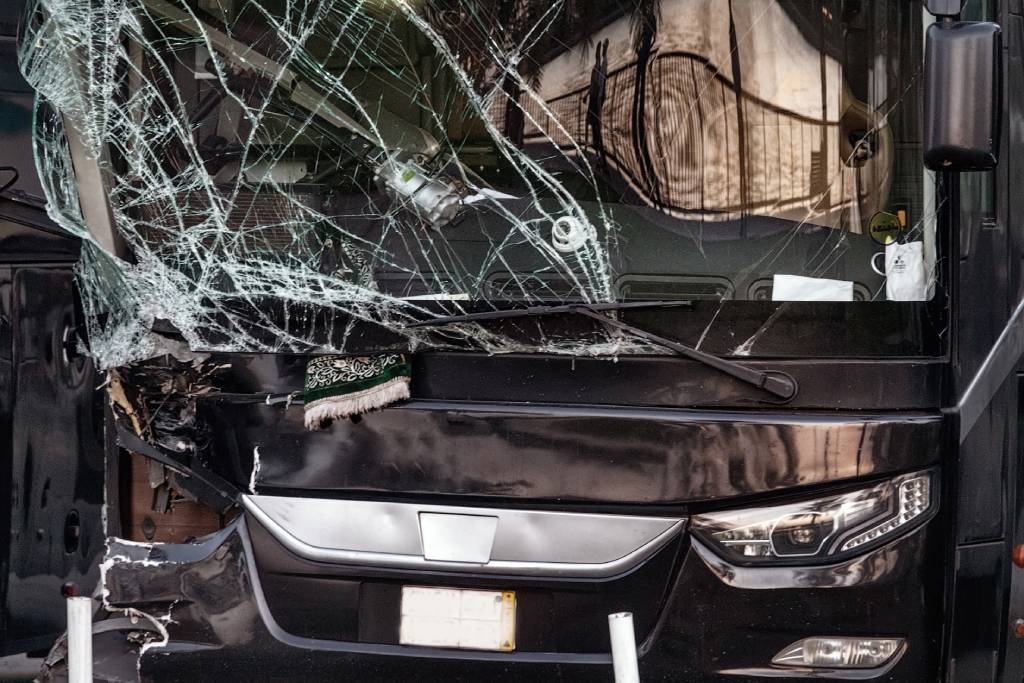Rear End Car Accident Injuries
In many cases, the person at fault for a rear-end collision is the person in the back. However, in some cases, the front driver is at fault. Regardless of which position you are in, a rear-end collision can cause bodily damage, even at speeds as low as 2.5 miles per hour. As with any other accident, call first responders and check on passengers and other drivers involved, if you can do so without further injuring yourself. To learn how to protect your opportunity for legal compensation read on to see what our experienced car accident lawyers have to say about rear-end collisions.
Liability In Rear End Accident
If you are in an accident, never admit guilt, even if you think you caused it or the police report says you did. An investigation into the accident could show that the police who responded to the initial accident scene were incorrect. If you believe you were not at fault, yet the other party insists that you were, you can request an investigation of the accident. The investigator’s report will become part of the evidence to defend your rights.
When the Rear Driver Might Be Liable
In most cases, the rear driver is at fault for a rear-end accident.
Some situations where the rear driver may be at fault include:
- Distracted driving, including eating, texting, talking on the phone, reaching into the backseat, reaching into the passenger seat or floor, fiddling with the radio, and fiddling with the other controls in the vehicle.
- Speeding and excessive speeding.
- Tailgating.
- Aggressive driving.
- Driving under the influence.
- Driving while tired or fatigued.
When the Front Driver Might Be Liable
In some cases, the front driver could cause a rear-end crash.
In these cases, the front driver may have:
- Driven distracted, which caused them to brake suddenly. When the vehicle behind the front driver has no warning that the front driver is going to slam on the brakes, the rear driver may hit the front driver.
- Driven aggressively, including cutting off other vehicles, making frequent and unnecessary lane changes, making sudden turns, or engaging in other aggressive driving behaviors.
- Driven with broken brake lights and/or turn signals.
- Merged improperly at intersections.
- Driven with no visible markings on the back of a trailer or large truck.
When a Third Party Might Be Liable
Sometimes, neither the front driver nor the rear driver is liable for a rear-end crash—or one or both might be partially liable.
Some situations in which a third party may be liable include:
- Defective parts in one of the involved vehicles, such as tires and brakes.
- Poorly performed maintenance on important vehicle components such as steering, suspension, tires, or brakes.
- Poor road maintenance.
- Other vehicles stopped in the middle of the road.
- Pedestrians who walk into the path of an oncoming vehicle, causing that driver to slam on their brakes.
- Other aggressive drivers, whose behavior can lead to a chain reaction crash.
Additional Factors In A Rear End Accident
Many other factors can play a role in rear-end accidents. The Federal Highway Administration has found that while people of all genders get into wrecks, men are more likely to be in fatal crashes while women are more likely to be severely injured. The severity of the wreck and whether it is fatal depends on many factors, including location, speed, and driver behavior.
Rear-End Collision Injuries
People who are involved in rear-end accidents suffer many different types of injuries. Some injuries manifest immediately, and some manifest later.
Injuries that you might not notice until hours or even a day or two after the car accident include:
- Whiplash. This is one of the more common injuries people suffer in rear-end collisions. The pain from whiplash usually takes a few days to develop, but can sometimes take longer. When someone hits you from behind, the force often causes your head and neck to move rapidly back and forth, damaging the soft tissues in your neck. Many times, what starts as whiplash can lead to more serious spinal injuries.
- Traumatic brain injuries. Concussions are a form of traumatic brain injury, including “mild” concussions. Sometimes concussions and other traumatic brain injuries are difficult to diagnose. And even patients who receive “mild” concussions, especially patients who receive multiple concussions over time, can suffer chronic traumatic encephalopathy later in life.
- Post-traumatic stress disorder. PTSD, a serious psychiatric disorder, often affects people after a traumatizing event, including car accidents. Those who develop PTSD might feel anxious, depressed, or both after an accident. Triggers that remind the person of their traumatizing experience can cause panic attacks. Some examples of potential triggers are loud noises that sound like a car crash or seeing a loved one bleeding.
- Internal bleeding. Hitting your body on the steering wheel or against the seat belt can cause internal injuries. Even your body simply being forced forward from a dead stop can cause internal bleeding. You might not realize that you have suffered injuries right away, so it is always imperative that you get medical attention after an accident, even if you do not think you have injuries. Signs of internal bleeding include dizziness, fainting, swelling in your abdomen, bruises that won’t heal, and abdominal pain.
Additional injuries can include rib fractures, ankle, knee, and leg damages, facial injuries, cervical spine injuries, and soft tissue injuries. Any of these injuries can lead to long-term or permanent disabilities. While some of these additional injuries can take some hours to manifest, those are the types of injuries accident victims typically notice immediately. Likewise, some injuries that often take some time to manifest can manifest immediately for some people.
Regardless of how you feel after an accident, seek immediate medical attention even if you believe you did not suffer injuries.
What to Do After a Rear-End Wreck
If you can move without doing further damage to yourself, start by calling 911. Check on passengers and other drivers. Allow responding emergency medical technicians to check you out, then go directly to the hospital for more thorough medical treatment. Tell the medical professionals who treat you that you were in a car accident and that you need tests to determine if you damaged your neck or have internal bleeding. Be sure to discuss any visible injuries with your treatment team.
After the hospital releases you, contact a rear-end collision attorney to discuss your injuries and the accident. When you notify your insurance company of your accident, only give them your name, contact information, date and location of the accident, and your attorney’s contact information.
After You Receive Initial Medical Care
You may feel tempted to skip medical appointments after you receive initial care, but that could jeopardize your ability to recover the full amount of damages that the defendant might owe you. Keep every follow-up appointment with all of your medical providers. If doctors prescribe therapy sessions, attend every one unless you have an emergency that prevents you from attending.
If the defendant discovers that you did not keep your appointments, the defendant can claim that your injuries are not as bad as you say. The last thing you want to do is to make it easy for the defendant to diminish your injury claim.
Why You Should Not Speak to the Insurance Company
When you speak to an insurance company, the insurance adjuster will ask you probing questions about the accident. Even if it is clear to you that it is another person’s fault, do not give the insurance company any information. Insurance companies are for-profit corporations, and they are in business to make money. Because of this, insurance companies will look for any reason to deny your claim. Barring that, they will offer you the smallest settlement possible.
Even if you do not say anything that you think the insurance company could use against you, it will try to find a way to twist your words. Attorneys are used to these tactics and know how to present your case so that the insurance company can’t easily twist the facts.
When an attorney helps you negotiate, you are likely to get a better offer, but those offers could still come in low if the insurance company is being particularly stubborn. In this situation, your attorney can help you determine if pursuing litigation is feasible and advisable. If you do choose to litigate, your attorney will have a head start on your case, since they will have most of the evidence required to represent your rights in a trial.
Recoverable Damages After A Rear End Car Accident
After an accident, including a rear-end accident, the injured or the family of the injured can seek economic damages and non-economic damages, or special damages and general damages, respectively.
Economic Damages
Special damages, or economic damages, are costs the accident victim has to bear because of the accident. They have an objective monetary value.
Accident victims or their families can seek a variety of economic damages, often including:
- Medical expenses, including expenses for physical therapy, cognitive therapy, and psychological therapy;
- Lost wages;
- Replacement or repair of destroyed or damaged personal property; and
- Funeral, burial, and cremation expenses.
Additionally, if doctors believe that the victim’s accident-related injuries will cause long-term or permanent disabilities, accident victims can sometimes recover future medical expenses and future lost wages. If the accident killed someone who contributed to the financial health of their family, the family can also seek to recover their loved one’s future lost wages.
If an accident victim can go back to work but cannot work in the same capacity and must take a job that pays less, the accident victim can seek to recover partial lost wages to make up for the additional money they can no longer earn.
Non-Economic Damages
General damages, or non-economic damages, are the accident-related costs that do not have an easily-assigned monetary value.
Non-economic damages can include compensation for:
- Pain and suffering;
- Emotional distress;
- Loss of a bodily function, such as eyesight;
- Loss of a boy part, such as an arm or foot;
- Loss of companionship;
- Loss of consortium;
- Loss of quality of life;
- Amputation;
- Excessive scarring;
- Disfigurement; and
- Inconvenience.
Depending on the severity of your injuries, you may recover compensation for several non-economic damage categories, especially for injuries that require long-term follow-up care or if you require physical therapy, psychological therapy, and/or cognitive therapy.
Recovering compensation is often a complicated feat due to the roadblocks insurance companies generally attempt to throw up. This is especially true if more than one party is potentially liable for your injuries. And, in some cases, such as when a commercial vehicle rear-ends you, the driver’s employer or other related companies may share responsibility for the accident with the driver.
What Is a Long-Term or Permanent Disability?
Most insurance companies have their own definition of long-term or permanent disability. The Social Security Administration considers disabilities that doctors expect to last longer than 12 months or that will eventually result in your death as long-term or permanent disabilities.
If you do not agree with the insurance company about whether your injuries are long-term or permanent, your attorney might ask you to visit another doctor for a second opinion. If so, the sooner you do this, the sooner the second doctor can submit their report into evidence.
If you suffered injuries or lost a loved one in a rear-end crash, a car accident lawyer can answer your questions and help determine if you have a valid legal claim during the free case evaluation.


